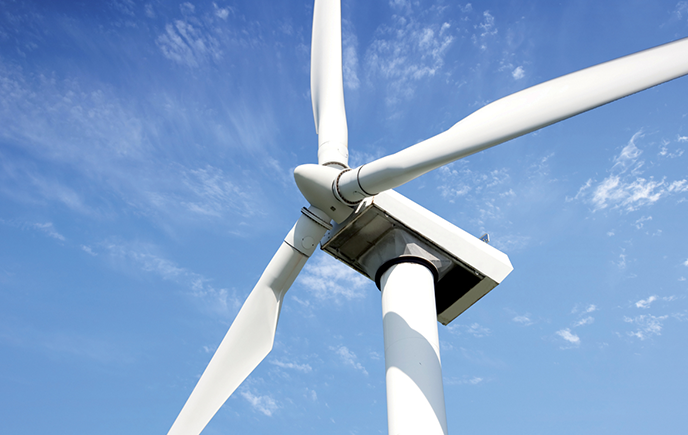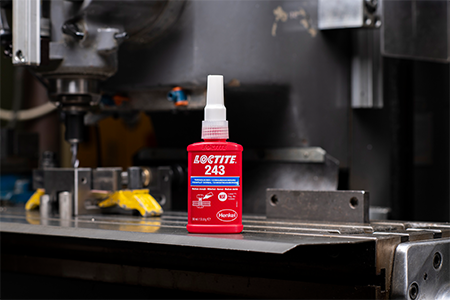Full steam ahead - Scottish distillery with Grundfos
There’s steam and there’s high-quality steam. There are pump solutions and intelligent pump solution...
Threadlocking adhesives have a long and successful history in many industrial sectors, but with an industry wide push towards renewable energy, there is growing evidence to suggest that this particular sector is increasing its uptake of such advanced products.

Among the drivers behind this notable trend at wind farms is the fear of vibration loosening and corrosion, effects that often lead to the catastrophic failure of conventional mechanical locking devices such as spring washers, nylon ring nuts, and flat washers.
Most commonly, damage and mechanical issues regarding fasteners on wind turbines occur on what are labelled as critical assemblies such as blades, gearboxes, generators, drivetrains, and brakes – all of which are housed in the nacelle. But there are many factors at play here.
For instance, even when the blades are not turning, a turbine can still be considered a moving structure. High winds, for example, will cause the tower and nacelle to sway, producing mechanical stress and vibration along the entire height of the structure. Furthermore, it is well established that several structural elements of wind turbines are subject to expansion and contraction as temperatures fluctuate.

In fact, some turbines experience drastic changes in temperatures that extend from sub-zero during the winter months to more than 38°C in the summertime.
Typical wind farm applications for threadlocking adhesives include the locking and sealing of dozens of fasteners on the yaw and main rotor bearings, as well as the nacelle panels. Available in a variety of strengths, threadlockers provide outstanding temperature resistance, faster fixture and cure speeds, and straightforward dispensing.
Threadlocking adhesives also act as lubricants during fastener tightening, so instead of dissipating torque as friction and heat, the conversion of applied torque to high clamp load is improved. Once cured, threadlockers offer a reliable seal and prevent effects such as galling and corrosion, which can seize threads.
The leading cause of threaded fastener loosening is vibration. Excessive vibration can lead to a loss of clamp load and, ultimately, failure. As a consequence, clamp force must meet the design specification when the fastener is first assembled and remain at that value throughout its entire operating life.

Every engineered component located in the nacelle is a concern when it comes to fasteners, as are the staircases required to reach them. If you’re unfamiliar, nacelle access on a large commercial wind turbine requires maintenance professionals to climb a series of ladders that can take them more than 90 metres above ground level. Therefore, the method to which the ladder and treads are secured into position demands close attention.
Fully aware of the dangers to both costly components and personnel, a wind farm that recently erected its first turbine wanted to ensure that the bolts attaching the blade to the hub maintained the design torque and were protected from the corrosion that can occur following constant exposure to the elements.
LOCTITE® 243 threadlocking adhesive from Henkel proved to be the ideal solution, helping to not only prevent catastrophic failure by resisting vibrational loosening, but also by avoiding thread corrosion and maintaining fastener torque in the wing-to-hub assembly.
To explain a little more about the science behind this technology, a fastener’s ability to remain secure is compromised by the inherent tiny gaps present between the surfaces of the mating thread. These gaps permit micro movement to occur that, throughout time, loosen the fastener and result in a loss of clamp load.
The growing popularity of threadlocking adhesives such as LOCTITE® 243 results from their capability to completely fill the voids between interfacing threads, thereby preventing any opportunity for micro movement.
In thwarting both vibration loosing and corrosion, the adoption of threadlockers at the wind farm is circumnavigating the risk of fastener failure and will in turn make disassembly easier if, and when, the necessity arises.
A LOCTITE® Engineering Solutions Expert assisted a wind farm team in the removal of the protective shipping covers from the exposed bolt threads and cleaning of their steel fasteners. The team were then able to insert the blade into the main hub, apply LOCTITE® 243 to the fasteners, correctly torque the blade-to-hub assembly in accordance with the specification, and mounted the hub to the generator drive system.
Now, with corrosion-free fasteners that maintain clamp load, and which are easily disassembled at a predictable break-loose torque, the wind farm is assured of safe, maintenance-free wind turbine operation until its next scheduled downtime for routine checks.

Anaerobic threadlockers such as LOCTITE® 243 – which is part of an extensive range offered by Henkel – are one-part adhesives that, in the absence of air, form into tough thermoset plastics when applied to metals. These products deliver 100% contact between metal components, which contrasts greatly with a typical untreated nut and bolt assembly, where as little as 15% metal-to-metal contact is commonplace.
The latest breakthroughs in the stability and reactivity of anaerobic chemistry have resulted in the availability of standard liquid and stick formulations to suit different applications. Moreover, high-lubricity anaerobic threadlocking adhesives effectively reduce friction, making them particularly suited to the large diameter, high-strength fasteners found on wind turbines.
Such adhesives are also formulated to deliver enhanced oil tolerance, ensuring their suitability for use in turbine gearboxes and other moving parts exposed to lubricants.
Another attribute is excellent performance without activators. There innovative formulations are perfect for use on plated and stainless fasteners as they eradicate the need for cleaning and cure rapidly.

Ultimately, the growing adoption of threadlocking adhesives by the wind farm sector is resulting in safer, longer-lasting fastened joints, which in turn supports the uninterrupted supply of renewable energy as the world transitions to a greener future.
For more information on Henkel’s comprehensive range of LOCTITE solutions, please contact your local ERIKS Service Centre, who will be happy to discuss your options.
Get the latest updates from ERIKS including:
Choose any or all of these via the ERIKS Subscription Centre!
Our Know+How brings together the best of the latest Know+How Hub articles in one easy to digest magazine, covering the following topics:
That's why its the leading magazine for maintenance engineers from ERIKS.
Want Know+How Magazine delivered direct to your door? Visit the ERIKS Subscription Centre to opt-in!
Take a look at our latest updates...
There’s steam and there’s high-quality steam. There are pump solutions and intelligent pump solution...
Looking for a custom Product quote? Need an answer to a Technical question? Looking for Careers/HR support? Want to work with us? Interested in our Digital Trading solutions? Have a finance question? Send us your enquiry and a member of the ERIKS team will be with you quickly.
We strive to deliver exceptional quality service and products. As part of this goal, we encourage customers to submit feedback on their experiences so we can resolve any issues and concerns.
At ERIKS we strive to deliver the best quality service and products. As part of this goal we encourage customers to submit feedback on their experiences so we can resolve any issues and concerns.
Call us: +441215086000
